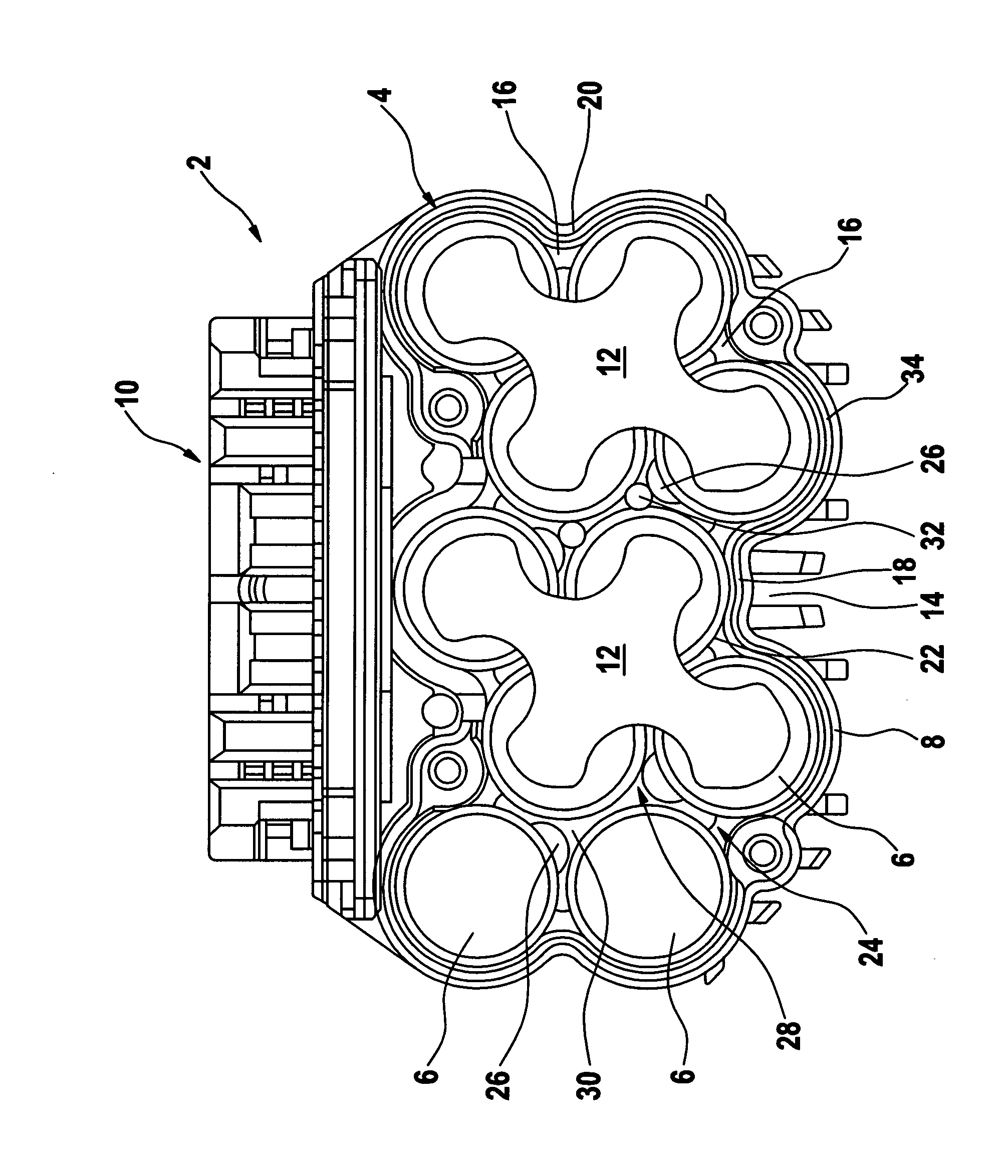Battery pack
a battery pack and battery technology, applied in the field of batteries, can solve the problems of power loss and unsuitability of plastic materials for battery pack housings, and achieve the effects of reducing material costs, improving mechanical properties, and improving break strength
- Summary
- Abstract
- Description
- Claims
- Application Information
AI Technical Summary
Benefits of technology
Problems solved by technology
Method used
Image
Examples
Embodiment Construction
[0019] The battery pack 2 shown in the drawing serves as a power supply for an electrical appliance, such as a handheld power tool. It substantially comprises a housing 4 that is open on its upper face end, one or more layers of battery cells 6 placed side by side in the housing 4 (only the uppermost layer is visible in the drawing), and a closure (not shown), which closes the housing 4 on the face end of the uppermost layer of cells 6. The closure, as a rule formed by part of the electrical appliance, includes two contacts that come into contact with connection contacts of the battery pack 2 when the housing 4 is closed in order to connect series- or parallel-connected cells 6, accommodated in the housing 4, to a current circuit of the consumer of the electrical appliance.
[0020] The housing is produced in one piece by injection molding from high-density polyethylene (PE-HD). Besides a bottom wall (not visible) and a circumferential wall 8, it includes a locking and connection part...
PUM
 Login to View More
Login to View More Abstract
Description
Claims
Application Information
 Login to View More
Login to View More - R&D
- Intellectual Property
- Life Sciences
- Materials
- Tech Scout
- Unparalleled Data Quality
- Higher Quality Content
- 60% Fewer Hallucinations
Browse by: Latest US Patents, China's latest patents, Technical Efficacy Thesaurus, Application Domain, Technology Topic, Popular Technical Reports.
© 2025 PatSnap. All rights reserved.Legal|Privacy policy|Modern Slavery Act Transparency Statement|Sitemap|About US| Contact US: help@patsnap.com


